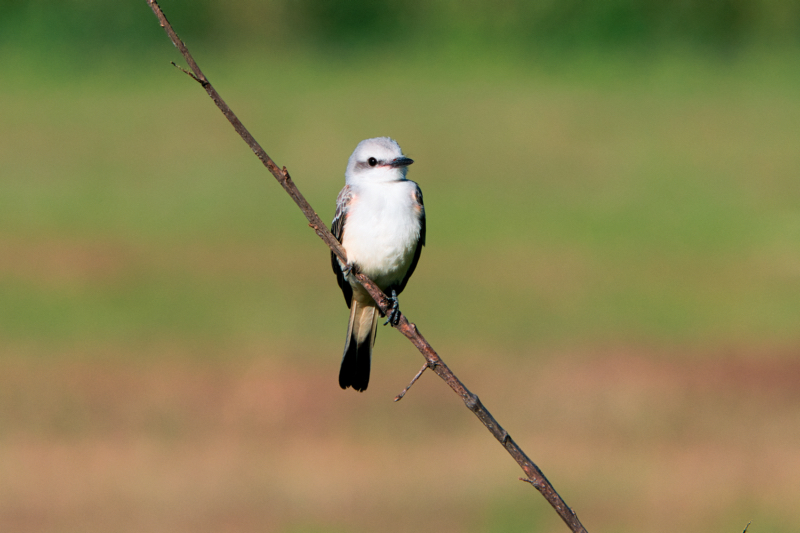I was walking in an area near Willow Slough, which is located at the Sequoyah National Wildlife Refuge in Oklahoma when I spotted a young Scissor-tailed Flycatcher perched on a small tree overlooking a field. This medium-sized bird is known for its incredibly long, forked tail feathers, which can measure up to 15 inches in adult birds. However, this was a juvenile, likely fledged earlier this summer. Its tail feathers were not yet the full length of an adult, though it already displayed the distinctive scissor-shaped silhouette. Young flycatchers usually reach full tail length by late summer or early fall after their first molt. So while this particular bird’s tail was not as dramatically elongated, it will likely sport the full 15 inches after replacing its feathers over the next couple months.

I started by taking a couple of photos from a distance, trying not to startle the bird. Once I got the initial shots, I began slowly moving closer, taking care to move quietly and smoothly. Every 10 steps or so I would pause and take another series of photos. Eventually, after several rounds of this, I found myself only about 10 steps away from the flycatcher, close enough to capture the details of its plumage in the morning light.
At this point, I decided not to disturb the bird any further and stopped advancing. The young flycatcher spotted something in the field. In a flash, it spread its scissor-like tail and darted off the branch, swooping low over the grass. I watched as it landed on the ground, presumably having spied a tasty insect or spider hiding in the field.
Though I wasn’t able to get the shot of it making the catch, I went away thrilled with the photos I did manage to get. The opportunity to observe and photograph such a remarkable bird in its natural habitat was a special experience. Moments like these are what make wildlife photography so rewarding.
Steve Creek, Wildlife Photographer
Equipment Used:
- Camera: Canon EOS R5
- Lens: Canon RF 100-500 mm F4.5-7.1 L IS USM
Technical Details:
- Location: Sequoyah National Wildlife Refuge (Oklahoma)
- Date and Time Taken: August 16, 2023 (08:36 A. M.)
- Program Mode: Manual
- Aperture: f10
- Shutter speed: 1/800
- ISO: 250 (Auto)
- Exp. Comp.: -0.7
- Focal Length: 500 mm
